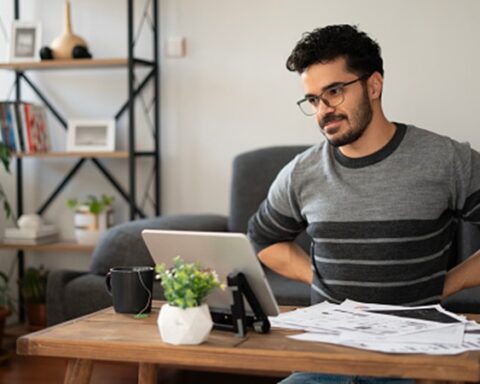New Delhi, November 18, 2023: Back pain impacts an estimated 540 million people across the globe. The global burden of back pain will likely increase during the next few decades, especially in low- and middle-income countries.
A research found that 41 per cent of back pain people have missed out on exercise because of back troubles – and 30 per cent have even skimped on walking.
Many of us sit down for far too long, with research warning us that doing so for many hours a day can actually ‘rapidly’ increase the risk of dementia. Whether it’s from working, watching TV or playing about on your phone, anyone seated for ten hours is eight per cent more likely to develop dementia than those who sit for nine hours a day. If you remain regularly seated for 12 hours at a time, a staggering 63 per cent were more likely to develop the condition, according to researchers at the USC and University of Arizona.
The British Heart Foundation says working-age adults spend an average of 9.5 hours a day of sedentary time, but this increases to ten hours a day or more between the ages of 65 and 74, and 11 hours for those over 75. The study, which was published in the Journal of the American Medical Association (JAMA), adds further weight to the link between sitting and disease, which has been known since the 1950s. Over the years, inactivity has been linked to heart disease, poor mental health, diabetes, and a general risk of dying young. The NHS says sitting for too long could slow down the metabolism, which affects the body’s ability to break down fat as well as regulate blood sugar and blood pressure.
People often report tighter and more painful back muscles with prolonged sitting. Physiotherapist Sammy Margo says that chronic back pain doesn’t just affect us physically. She explains: “Living with continual discomfort, and in some cases agony, is bound to take its toll on our mental health. Plus, if we’re less likely to go out and socialise when we’re suffering from back pain, then it will affect us mentally even more, as it’s well known that socialising is key to good mental health.”
And that’s not all, as nearly half of the global people have to take time off work due to the pain. For those who work in an office, this means less time around others and even less time socialising and connecting.
But rather than turning to painkillers, Mind Your Back has shared five simple self-care S.T.E.P.S to help ease pain and show your spine plenty of love:
Stretch
“A good stretch several times a day is a great way to loosen tight muscles and increase mobility,” says Sammy Margo. “However, a stretch shouldn’t hurt, so if you find yourself in pain during a stretch, then you must stop. Need an easy stretch to break up your day? Try the below, which can be done by your desk for ease.”
Flex and Extend
- Stand by your desk, feet hip-width apart. Place your hands or elbows on the desk to take the pressure off your back
- Slowly start to arch your back and allow your head and neck to relax down
- Tuck in your tailbone, engage your bottom and hold
- Next, drop your tummy down and dip your back. Bring your head up slowly. Repeat the whole move, twice
Therapy
Find the right topical products – hot, cold, or anti-inflammatory – to help manage your back pain.
- Hot: soothes muscles, aches and pains; may ease tight muscles and help ease movement
- Cold: fast, soothing, and comforting cooling relief
- Anti-inflammatory: effective relief from back pain, rheumatic pain, muscular aches, pains, and swellings such as strains and sprains
Exercise
“We’ve often been told to stay still when we’re experiencing back pain,” says Sammy. “Yet, the opposite is in fact true. Our backs need to move to stay healthy, but what movement is best? Aim for the recommended 150 minutes of moderate-to-intense exercise a week, however more is great! Try walking, cycling, dancing, yoga, and swimming. If you’re new to exercise, start with gentle activities and build up slowly to more strenuous ones. It’s also best to do little and often, moving regularly, rather than moving for a longer period in the morning and then sitting still all day.”
Posture
Ever found yourself slouching over a laptop? Or eating off the sofa, hunched over a plate of food? Today’s lifestyle of screens, sofas and being sedentary, is doing our backs no favours at all. Try these simple posture-perfecting tips:
- When standing … your ear, shoulder, hip, and ankle should be in line. Try standing with your back against a wall as a guide
- When sitting … keep your ear, shoulder, and hip in line. Try sitting with your bum against the back of a chair and feet flat on the floor
- When sleeping … your spine should be straight when lying on your side. Try placing a pillow between your legs (if you sleep on your side) or under your knees (if you sleep on your back)
Strengthen
“Strong muscles supporting your spine means less chance of pain and less chance of injury. Try exercises to help strengthen your back muscles and prevent pain spots developing. The core muscles are just some of the muscles that help support your spine. A strong core can help protect the spine, but it also helps us move comfortably throughout life generally, as we need our core for every movement we do.”





